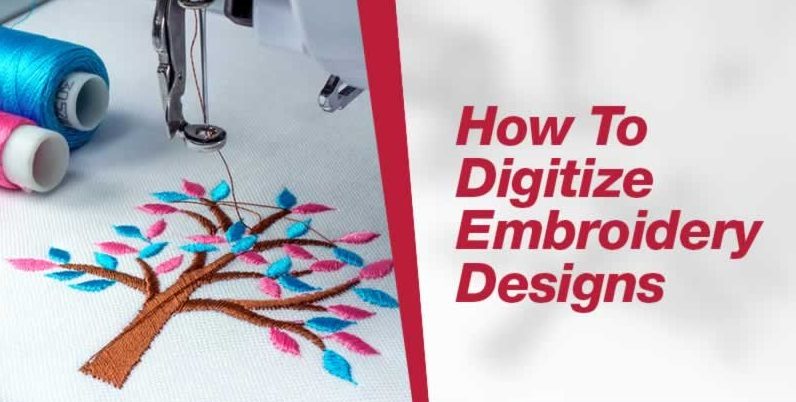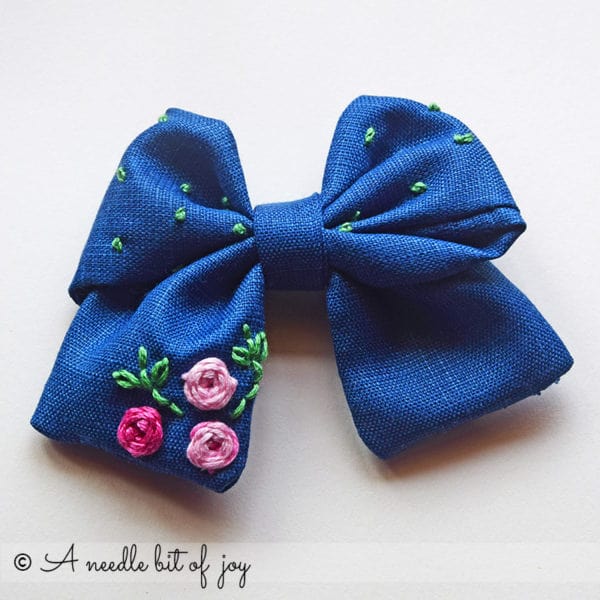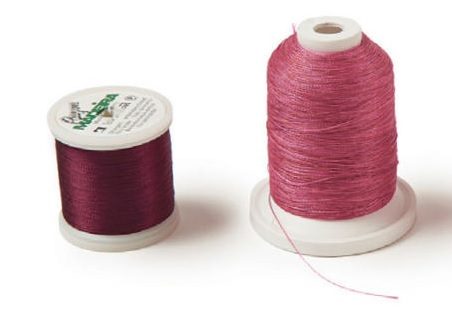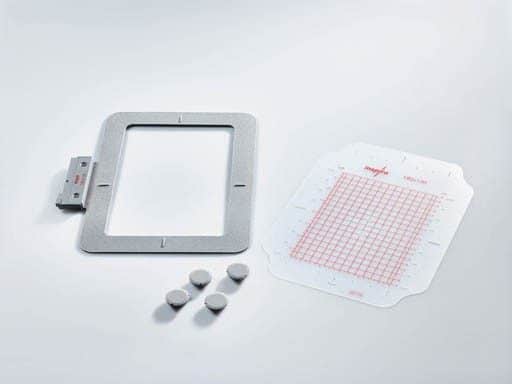Prerequisites for digitizing an embroidery design from an image
First of all, you need a good quality image in vector format preferably.
What is a vector image?
A vector image is an image created using mathematical formulas. Its quality is therefore “computingly speaking perfect”. You can apply different transformations to it without altering its quality.
Conversely, raster images (also called bitmaps or raster images) are created with colored pixels. If you enlarge a pixelated artwork in a file too much, it will look jagged.
It is therefore preferable to digitize a vector image than a classic image for an optimal result, in particular if you use the automatic digitizing tool of your software.
However, while auto-digitizing works pretty well for vector images, I don’t recommend using this feature. it is best to work each area individually and manually. I completely understand the rush to release a pattern, but know that the result will only be better if you take the trouble to work it well.
Embroidery image digitizing where to start?
First upload your image via your software. Visualize the latter well, and try to “pre-organize” your embroidery sequencing. A good vision of space is an asset for this step 😉
What is an embroidery sequence?
An embroidery is made up of different layers embroidered one after the other. It is therefore necessary before starting to think about the order in which your zones will be embroidered.
We generally start with the background and/or the largest areas, to finish with the upper details and/or the smallest areas.
How to proceed ?
Everyone has their own method, for my part I start by delimiting the main outer contours. Then I “trace” / draw each small upper area individually that I remove from my background to avoid color overlaps.
For example for an eye I first draw the white circle of the orbit background, then I draw the iris (blue for example), I remove the superposition of my blue from the white of the orbit. I then draw the black of the pupil which I remove from the blue of the iris. My main areas being ready I then apply my contours.
Belgian Shepherd Embroidery Design
We also try to group the colors together to avoid too frequent thread changes.
However, depending on the effects you want to give to your embroidery, the arrangement order takes precedence over the order of the colors and you will sometimes have to cut them.
For example, on the embroidery opposite, I started with the ears in black, then the pink inside the ears and I started to make the head. To give a mixed hair effect I had to make a first layer of gold for the collar and black for the head and gold for the collar, then I inversely superimposed a layer of black and gold, gray, then again a layer of black etc… I was thus able to obtain an “ash” effect of the coat.
It will therefore be necessary to draw each zone one by one and put them in the precise order of embroidery desired.
When your layers are ready and in order, we move on to setting up your last ones.
Setting embroidery areas, what is it and how do I do it?
You can apply a fill to each embroidery area. There are different types, filling “full” and more airy.
Dense embroidery fills
“Solid” fills will require careful settings, because the more stitches there are in your areas the more it will pull on your fabric. You can thus apply satin stitch type fillings (reserved for outlines or small areas), classic “tatami” type filling, pattern filling, etc.
This type of padding must be set up with great care.
Setting up the embroidery area underlay
First of all, you must make sure you have a suitable underlay or underlay. Ideally, you should apply an underlayer perpendicular to the orientation of your upper layer points.
For example, you have chosen a point orientation of 45° for your embroidery area, you will need to apply an underlayer whose orientation is perpendicular to 135°. The crossing of the underlayer with the upper layer will thus allow a better maintenance of your fabric and therefore less deformation of the latter.
Related Posts
Discover relevant articles, tutorials, and tips to improve your skills and explore new techniques.
Stay inspired and connected to our embroidery community.






